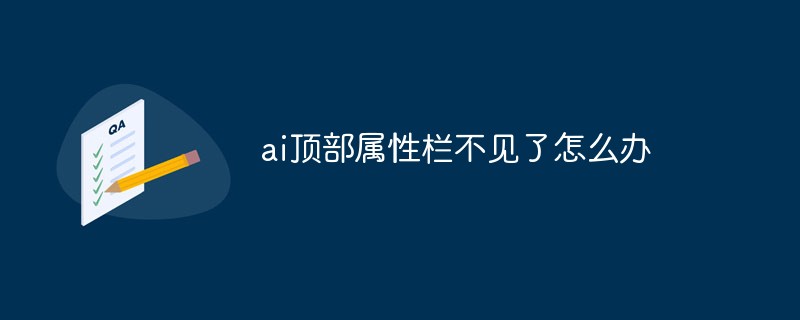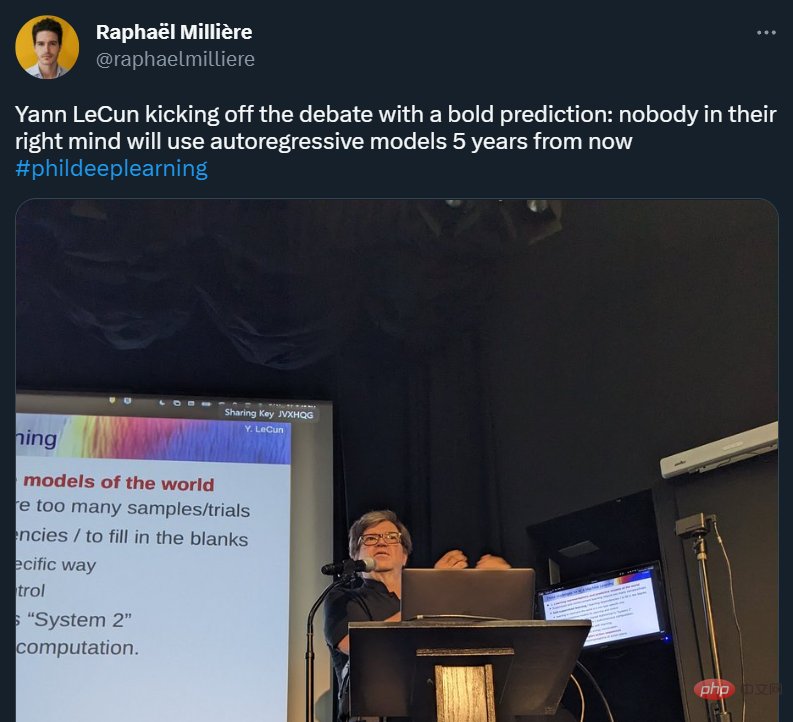 Technology peripherals
Technology peripherals AI
AI The technical reasons behind the success of ChatGPT and its inspiration for the life sciences field
The technical reasons behind the success of ChatGPT and its inspiration for the life sciences fieldAs early as the 1950s, some scholars proposed the concept of artificial intelligence (Artificial Intelligence), whose purpose was to make computers possess human intelligence (or part of human intelligence). After many years of development in this field, there was still no breakthrough until deep learning technology emerged in 2012. Deep learning mainly solves the bottleneck of model representation capabilities. The modeling problems we face, such as image understanding, language translation, speech recognition, molecule-protein binding conformation prediction and other technologies, are all very complex nonlinear problems. Before the emergence of deep learning, the model representation ability was very weak and unable to Accurate representation of these complex problems. Deep learning technology can theoretically build models of any depth through the layered stacking of models, breaking through the bottleneck of model representation capabilities, thus making breakthrough progress in fields such as speech recognition, computer vision, and natural language understanding.
The emergence of deep learning technology marks that artificial intelligence has entered a new stage. Let us call the wave of artificial intelligence driven by deep learning that began around 2012New Generation of Artificial Intelligence Era (In fact, the application of deep learning in the field of speech recognition can be traced back to the earliest, but in view of the fact that many subsequent deep learning advances come from the field of computer vision, we use the 2012 AlexNet appears as a starting point). This period can be considered the first stage of the new generation of artificial intelligence driven by deep learning, that is, the annotation data-driven deep learning model, which has greatly improved the model's representation capabilities, thereby promoting Artificial intelligence technology has improved significantly and has achieved product and commercial success in the fields of computer vision and speech recognition. The main limitation of this stage is that it is very dependent on the amount of labeled data. As the number of model parameters increases, a large amount of training data is required as a constraint to solve so many model parameters. It is very expensive to obtain a large amount of annotated data, and it will be difficult to improve after reaching the 100 million level, and the effective model size supported by the data is also limited. During the period from 2012 to 2015, computer vision was the most active field, with various deep network models including ResNet emerging. In 2017, an important basic work, Transformer, appeared. In 2019, in the field of natural language processing (NLP), which has not been able to make major breakthroughs, a work called BERT stood out and achieved the best results in more than a dozen different natural language processing (NLP) tasks. The differences between these tasks are very large, so after the BERT work was published, it immediately attracted the attention of the entire field. BERT adopts an idea called
Self-supervised pre-training, which can train the model without labeling the data and only using the constraints of the text corpus itself (for example, only a certain position of a certain sentence can be trained Certain qualified words can be used), so that high-quality corpus existing on the Internet can be used for training without manual calibration, which suddenly greatly increases the amount of available training data, and coupled with large models, it makes The BERT model is far more effective than past models and has good versatility across different tasks, making it one of the milestones in the field of NLP. In fact, before BERT appeared in 2018, there was another work called GPT (i.e. GPT1.0), which earlier used the idea of self-supervised pre-training for text generation. That is, the previous text is input, and the model predicts and outputs the following text. High-quality corpus in the field can be trained without annotation. Both BERT and GPT were developed based on Transformer, and Transformer has gradually developed into a general model in the AI field. The effect of GPT1.0 is not amazing. Shortly after the emergence of BERT, GPT quickly released GPT2.0. The model size and training data volume were greatly improved. As a general model (that is, without downstream tasks for training and direct testing results), the results are better than the current ones on most tasks. There are models. However, since the BERT model has more advantages than the GPT2.0 model in feature representation and is easier to train, the most concerned work in the field at this stage is still BERT. But in July 2020, GPT3.0 turned out, stunning everyone with 170 billion parameters. More importantly, in terms of effect, GPT3.0 serves as a universal language model. You only need to provide it with a simple description to describe the generation you want to generate. Based on the content, you can generate executable code, generate web pages or icons, complete an article or news, and write poetry and music according to prompts without retraining. After the emergence of GPT3.0, it has received widespread attention from the industry, and many developers have made many interesting applications based on GPT3.0. GPT3.0 has become the best and most popular text generation model.
After the emergence of self-supervised pre-training technology, we can think that the new generation of artificial intelligence has developed into the second stage of , that is, self-supervised pre-training technology has increased the number of available training data by several orders of magnitude With the improvement of training data, the size of the model has also been improved by several orders of magnitude (the effective model has reached the scale of hundreds of billions), and in terms of model effect, these models no longer depend on the data of downstream task fields. Retraining, therefore, the field has entered the era of general large models based on self-supervised pre-training.
After that, GPT3.0, together with other work in the field, triggered a wave of model-sized arms races, but few truly breakthrough technologies emerged. Everyone realizes that simply increasing the model size does not fundamentally solve the problem. Just when everyone is looking forward to the emergence of follow-up work such as GPT4.0, GPT has not been updated for two full years. During this period, the most active work in the field of artificial intelligence mainly focused on two aspects, multi-modal unified models and content generation. Multimodal unified model, hoping to build a multimodal or cross-modal unified model, trying to uniformly represent different modal data such as text, image, and voice in one model, including the earliest cross-modal representation model CLIP, and subsequent A series of multimodal unified representation models. In the field of content generation, on the one hand, at the technical level, basic models such as the Diffusion Model have emerged. The development of the Diffusion Model and a series of variant models has made the field of AI Generated Content (AIGC) become It is very hot and has expanded from the field of image generation to the fields of natural language processing and life sciences. On the other hand, at the application level, a lot of substantial progress has been made in the field of image generation based on text. Among them, the most representative work is DALLE2. The model can be based on the input text. The description outputs images that look realistic, and even when the text description exceeds reality, it is still possible to generate images that appear to reasonably conform to the text description, as shown in the figure below. The success of a series of works such as DALLE2 is due on the one hand to the large amount of text-image correspondence data (approximately hundreds of millions of pairs), which models the correspondence between text and image semantics, and on the other hand to the diffusion model that overcomes GAN, VAE and other models have shortcomings such as difficulty in training and insufficient retention of details of the generated effects. The image generation effects are so stunning that many people believe that AI can already create content.

Figure. DALLE2 generation effect
At the end of November 2022, OpenAI released ChatGPT. After the release of ChatGPT, everyone found that this chatbot is very unusual and often gives amazing answers. There have been many conversational robots in the field of conversational robots, such as Apple's Siri, Microsoft's Xiaobing Xiaona, etc. The experience of these general conversational systems is not very ideal. People use them to tease them and then throw them aside. The system framework of command-execution question-and-answer robots used in products such as smart speakers is based on rule-driven dialogue management systems. There are a large number of manual rules, which makes these systems unable to be extended to general fields and can only provide simple and stylized answers. , on the other hand, cannot handle the environmental semantic information (Context) of multiple rounds of dialogue. From a technical perspective, ChatGPT is completely different from the original mainstream dialogue system. The entire system is based on a deep generation large model. For a given input, it is processed by the deep model and directly outputs an abstract summary answer. In terms of product experience, ChatGPT also far surpasses past chat systems. As a general chatbot, it can answer questions in almost any field, and its accuracy has reached the level that humans are willing to continue using it. It can still maintain a very good experience in multiple rounds of dialogue scenarios.
Of course, ChatGPT is not perfect. As a deep learning model, ChatGPT has flaws that cannot be 100% accurate. For some questions that require accurate answers (such as mathematical calculations, logical reasoning, or names, etc.) ), there will be some obvious errors that can be perceived. There have been some improvements later. For example, some work will provide reference web links for information. In Facebook's latest work ToolFormer , they try to include specific tasks in the generated model. By leaving the calculation to a specific API instead of using a general model, this is expected to overcome the problem that the model cannot be 100% accurate. If this path goes forward, the deep generative model is expected to become the core framework of AGI, and it will be integrated with other skill APIs through plug-ins. It is very exciting to think about it.
Commercially, on the one hand, ChatGPT has triggered imaginations about the challenges faced by search engines such as Google. On the other hand, everyone has seen various vertical product application opportunities related to natural language understanding. There is no doubt that ChatGPT is creating a new business opportunity in the field of natural language understanding that may rival search recommendations.
Why does ChatGPT have such amazing effects? One of the core reasons is that ChatGPT is built based on the large generative model GPT3.5, which should be the best model for text generation in the current field of natural language understanding (GPT3.5 is used more than GPT3.0 With more data and larger models, better results).
The second core reason is Reinforcement learning technology based on human feedback, that is, Reinforcement Learning from Human Feedback (abbreviated as RLHF) . Since OpenAI has not published a paper on ChatGPT and has not made the code public, it is generally believed that it is most similar to the technology disclosed in a previous article, InstructGPT (https://arxiv.org/pdf/2203.02155.pdf). As shown in the figure below, according to the description in InstructGPT, the first step is to collect user preference data for different answers to the same question; the second step is to use this preference data to retrain the GPT model. This step is based on fine-tuning of supervision information; The third step is to train a scoring function according to the user's preference for different answers. A score will be given for the answer of ChatGPT. This score will reflect the user's preference for different answers. The fourth step is to use this scoring function as a reinforcement learning method. Feedback (Reward) trains the reinforcement learning model, making the final answers output by ChatGPT more biased towards answers that users like. Through the above process, ChatGPT outputs more user-friendly answers to user input based on GPT3.5.

ChatGPT The first stage of training the GPT generation model uses a lot of training data, about With tens of terabytes, it costs tens of millions of dollars to train a model once, while in the second stage, a small amount of high-quality data feedback based on reinforcement learning only requires tens of thousands of high-quality data. We can see that ChatGPT technology is based on self-supervised pre-training large models combined with reinforcement learning technology based on human feedback, and has made very significant progress. This new paradigm may become the core driving technology of the third stage of artificial intelligence, that is, first based on large models of self-supervised pre-training, and then combined with reinforcement learning technology based on a small amount of high-quality data feedback to form a model and closed-loop feedback of data to achieve further technological breakthroughs.
Regarding ChatGPT, our views are as follows:
(1) ChatGPT is indeed the greatest work of this era One, let us see the amazing effects of AI based on self-supervised pre-training to generate large models and reinforcement learning feedback strategy results based on a small amount of high-quality data, which in a sense has changed our perception.
(2) ChatGPT related technologies have very great commercial value, causing many products including search engines to face the opportunity to be reconstructed or subverted, which will undoubtedly bring many new business opportunities, and the entire NLP field will benefit.
(3) Generative large models based on self-supervised pre-training and learning paradigms based on reinforcement learning feedback strategies based on a small amount of high-quality data are expected to become the driving force for the advancement of various fields in the future, except for the NLP field. In addition, it is expected to trigger a new round of artificial intelligence boom in various fields such as life sciences, robotics, and autonomous driving.
(4) ChatGPT does not prove that artificial intelligence has a human mind. Some of the creativity and intelligence shown by ChatGPT are because the natural language understanding corpus contains semantics and logic, based on The generative model trained on natural language corpus has learned these correspondences in a statistical sense and seems to have intelligence, but it does not really have human mind. ChatGPT is great, but it is not rigorous enough to say that its intelligence is equal to that of a child of several years old. Because fundamentally speaking, AI does not yet have the ability for people to learn new knowledge, perform logical reasoning, imagination, and motion feedback. Excessive hype on the intelligence and capabilities of ChatGPT will drive out good coins and harm the entire industry.
(5) In this field, there is still a gap in China’s technology. In the past two years, we have not seen a text generation model that can truly replicate the effect of GPT3.0. Without GPT3.0 and 3.5, There will be no ChatGPT. Work such as GPT3, GPT3.5 and ChatGPT are not open source, and even the API is blocked in China. This is a practical difficulty for copying work. To put it more pessimistically, most teams that want to replicate the effects of ChatGPT will not succeed.
(6) ChatGPT is not an algorithm breakthrough made by one or two researchers, but the result of a very complex algorithm engineering system guided by advanced concepts. It needs to be Team and organizational matching (analogous to OpenAI and DeepMind). A purely research-oriented team may not succeed, nor will a team that does not understand deep learning enough and is too engineering-oriented. This team needs: first, sufficient resource support to support expensive deep learning training and talent recruitment; second, expert leaders who have truly led engineering large model teams in the industry. ChatGPT not only has algorithm innovation, but also It is engineering system innovation; thirdly, and perhaps most importantly, it requires an organization that is united, collaborates, has unified leadership, and does not pursue publication of papers (a loose organization is conducive to algorithm innovation, but not conducive to engineering algorithm research), and is adequately equipped. What great engineering and algorithmic talents.
(7) We not only pursue making a ChatGPT, but also continue to pursue the technological innovation behind it, that is, vigorously develop self-supervised pre-training to generate large models and reinforcement learning based on a small amount of high-quality data Feedback strategy technology is not only the core technology of the next generation of ChatGPT, but also the technology that promotes overall progress in the field of artificial intelligence. The biggest concern is that a lot of resources will be wasted due to the dispersion of power due to speculation and chasing trends, or that excessive publicity of ChatGPT will damage the industry.
(8) ChatGPT still has room for improvement, and it is not the only technology worthy of attention and expectation. The most common misconception about AI is overestimating its short-term performance and underestimating its long-term performance. This is a great era in which AI has become the core driving force, but AI will not become omnipotent so quickly and requires our long-term efforts.
Here, we briefly summarize the key technology evolution in the new generation of artificial intelligence wave caused by deep learning since 2012:
(1 ) In the first stage, the key progress is the labeled data-driven supervised deep learning model, which greatly improves the model representation capabilities, thereby promoting significant progress in artificial intelligence technology. This stage is the most active In the field of computer vision and speech recognition, the main limitation is that labeled data is relatively expensive, which limits the amount of data that can be obtained, thereby limiting the effective model size that the data can support.
(2) In the second stage, the key progress isself-supervised pre-training of a general large model driven by big data, self-supervised pre-training The training technology has improved the available training data by several orders of magnitude, thus supporting the improvement of the model size by several orders of magnitude, becoming a universal model that does not need to rely on data in downstream task fields for retraining. At this stage, the greatest progress and the most active is the natural model. In the field of language understanding; the main limitation is that it requires massive data training, and the model is very large. It is very expensive to train and use, and it is also very inconvenient to retrain the vertical scene model.
(3) Although the third stage cannot be finalized yet, it shows a certain trend. The very important technical key in the future is whether, based on the large model, reinforcement learning, prompting and other methods can be used to significantly affect the output results of the large model with only a small amount of high-quality data. If this technology takes off, fields such as autonomous driving, robotics, and life sciences where data acquisition is expensive will benefit significantly. In the past, if you wanted to improve the problems of an AI model, you had to collect a large amount of data and retrain the model. If, in the field of robots that require offline interaction, on the basis of pre-trained large models, the robot's decision-making can be affected only by informing the robot of some correct and wrong action choices in real scenes, then the technology in the fields of driverless driving and robotics will Iteration will be more efficient. In the field of life sciences, if only a small amount of experimental data feedback can significantly affect the model prediction results, the revolution in the integration of the entire life science field with computing will come faster. At this point, ChatGPT is a very important milestone, and I believe there will be a lot of work to come.
Let us turn our attention back to the field of life sciences that we are more concerned about.
Since the technological advancements brought by ChatGPT have improved most NLP-related fields, technologies and products related to information query, retrieval and extraction in the field of life sciences will benefit first. For example, is it possible that in the future there will be a conversational vertical search engine in the field of life sciences? Experts can ask it any questions (such as questions about diseases, targets, proteins, etc.), and on the one hand it can give comprehensive trends. Judgment (perhaps not that precise, but probably correct, helps us quickly understand a field), on the other hand, it can give relevant and valuable information about a certain topic, which will undoubtedly significantly improve the information processing efficiency of experts. For example, is it possible to build an AI doctor so that patients can consult about disease knowledge and treatment methods (limited by technical limitations, AI cannot give precise answers, let alone replace doctors), but it can provide a lot of information for reference and follow-up treatment. For suggestions on what to do, the experience will definitely be significantly better than today's search engines.
There are still many important unsolved tasks in the field of life sciences, such as small molecule-protein binding conformation and affinity prediction, protein-protein interaction prediction, small molecule representation and property prediction , protein property prediction, small molecule generation, protein design, retrosynthetic route design and other tasks. At present, these problems have not been perfectly solved. If breakthroughs are made in these tasks, drug discovery and even the entire field of life sciences will usher in huge changes.
The AIGC field based on large models and the RLHF field based on expert or experimental feedback will benefit from the promotion of ChatGPT and will definitely lead to a new round of technological progress. Among them, AIGC (artificial intelligence content generation) technology has made good progress in the fields of small molecule generation and protein design in the past year. We predict that in the near future, the following tasks will significantly benefit from the development of AIGC generation technology and generate technological steps:
(1) Small molecule generation and optimization technology, i.e. How to generate small ligand molecules based on protein pocket structure information instead of relying on active ligand information, taking into account various constraints such as activity, druggability, and synthesizability. This part of the technology will significantly benefit from the development of the AIGC field;
(2) Conformation prediction can be regarded as a generation problem in a sense, and small molecule and protein binding conformation prediction tasks will also benefit from the development of AIGC-related technologies;
(3) Sequence design fields such as proteins, peptides, and AAV will also definitely benefit from the development of AIGC technology.
The above-mentioned AIGC-related tasks, as well as almost all tasks that require experimental verification feedback, including but not limited to activity prediction, property prediction, synthetic route design, etc., will have the opportunity to benefit from RLHF technology bring dividends.
Of course there are many challenges. Limited by the amount of available data, the current generation models used in the life science field are still relatively shallow, and shallow deep learning models such as GNN are mainly used (GNN is limited by the smoothness of message transmission, and the number of layers can only be used to about 3 layers. ), although the generation effect shows good potential, it is still not as amazing as ChatGPT. Reinforcement learning technology based on expert or experimental feedback is limited by the speed of experimental data generation and insufficient expression capabilities of the generated model, and it will also take a certain amount of time to present stunning results. However, judging from the evolution trend of ChatGPT technology, if we can train a large generative model that is deep enough and has strong enough representation capabilities, and use reinforcement learning to further improve the effect of the large model based on a small amount of high-quality experimental data or expert feedback, we can expect that the field of AIDD There will definitely be a revolution.
In short, ChatGPT is not only a technological advancement in the field of natural language understanding, but will also trigger a new round of business trends in the field of information services and content generation. At the same time, it is based on Deep generation technology of massive data and reinforcement learning technology based on human feedback are longer-term driving forces for progress and will lead to rapid development in life sciences and other fields. We will usher in another wave of AI technology advancement and industrial implementation.
The above is the detailed content of The technical reasons behind the success of ChatGPT and its inspiration for the life sciences field. For more information, please follow other related articles on the PHP Chinese website!
 ai合并图层的快捷键是什么Jan 07, 2021 am 10:59 AM
ai合并图层的快捷键是什么Jan 07, 2021 am 10:59 AMai合并图层的快捷键是“Ctrl+Shift+E”,它的作用是把目前所有处在显示状态的图层合并,在隐藏状态的图层则不作变动。也可以选中要合并的图层,在菜单栏中依次点击“窗口”-“路径查找器”,点击“合并”按钮。
 ai橡皮擦擦不掉东西怎么办Jan 13, 2021 am 10:23 AM
ai橡皮擦擦不掉东西怎么办Jan 13, 2021 am 10:23 AMai橡皮擦擦不掉东西是因为AI是矢量图软件,用橡皮擦不能擦位图的,其解决办法就是用蒙板工具以及钢笔勾好路径再建立蒙板即可实现擦掉东西。
 谷歌超强AI超算碾压英伟达A100!TPU v4性能提升10倍,细节首次公开Apr 07, 2023 pm 02:54 PM
谷歌超强AI超算碾压英伟达A100!TPU v4性能提升10倍,细节首次公开Apr 07, 2023 pm 02:54 PM虽然谷歌早在2020年,就在自家的数据中心上部署了当时最强的AI芯片——TPU v4。但直到今年的4月4日,谷歌才首次公布了这台AI超算的技术细节。论文地址:https://arxiv.org/abs/2304.01433相比于TPU v3,TPU v4的性能要高出2.1倍,而在整合4096个芯片之后,超算的性能更是提升了10倍。另外,谷歌还声称,自家芯片要比英伟达A100更快、更节能。与A100对打,速度快1.7倍论文中,谷歌表示,对于规模相当的系统,TPU v4可以提供比英伟达A100强1.
 ai可以转成psd格式吗Feb 22, 2023 pm 05:56 PM
ai可以转成psd格式吗Feb 22, 2023 pm 05:56 PMai可以转成psd格式。转换方法:1、打开Adobe Illustrator软件,依次点击顶部菜单栏的“文件”-“打开”,选择所需的ai文件;2、点击右侧功能面板中的“图层”,点击三杠图标,在弹出的选项中选择“释放到图层(顺序)”;3、依次点击顶部菜单栏的“文件”-“导出”-“导出为”;4、在弹出的“导出”对话框中,将“保存类型”设置为“PSD格式”,点击“导出”即可;
 ai顶部属性栏不见了怎么办Feb 22, 2023 pm 05:27 PM
ai顶部属性栏不见了怎么办Feb 22, 2023 pm 05:27 PMai顶部属性栏不见了的解决办法:1、开启Ai新建画布,进入绘图页面;2、在Ai顶部菜单栏中点击“窗口”;3、在系统弹出的窗口菜单页面中点击“控制”,然后开启“控制”窗口即可显示出属性栏。
 GPT-4的研究路径没有前途?Yann LeCun给自回归判了死刑Apr 04, 2023 am 11:55 AM
GPT-4的研究路径没有前途?Yann LeCun给自回归判了死刑Apr 04, 2023 am 11:55 AMYann LeCun 这个观点的确有些大胆。 「从现在起 5 年内,没有哪个头脑正常的人会使用自回归模型。」最近,图灵奖得主 Yann LeCun 给一场辩论做了个特别的开场。而他口中的自回归,正是当前爆红的 GPT 家族模型所依赖的学习范式。当然,被 Yann LeCun 指出问题的不只是自回归模型。在他看来,当前整个的机器学习领域都面临巨大挑战。这场辩论的主题为「Do large language models need sensory grounding for meaning and u
 强化学习再登Nature封面,自动驾驶安全验证新范式大幅减少测试里程Mar 31, 2023 pm 10:38 PM
强化学习再登Nature封面,自动驾驶安全验证新范式大幅减少测试里程Mar 31, 2023 pm 10:38 PM引入密集强化学习,用 AI 验证 AI。 自动驾驶汽车 (AV) 技术的快速发展,使得我们正处于交通革命的风口浪尖,其规模是自一个世纪前汽车问世以来从未见过的。自动驾驶技术具有显着提高交通安全性、机动性和可持续性的潜力,因此引起了工业界、政府机构、专业组织和学术机构的共同关注。过去 20 年里,自动驾驶汽车的发展取得了长足的进步,尤其是随着深度学习的出现更是如此。到 2015 年,开始有公司宣布他们将在 2020 之前量产 AV。不过到目前为止,并且没有 level 4 级别的 AV 可以在市场
 ai移动不了东西了怎么办Mar 07, 2023 am 10:03 AM
ai移动不了东西了怎么办Mar 07, 2023 am 10:03 AMai移动不了东西的解决办法:1、打开ai软件,打开空白文档;2、选择矩形工具,在文档中绘制矩形;3、点击选择工具,移动文档中的矩形;4、点击图层按钮,弹出图层面板对话框,解锁图层;5、点击选择工具,移动矩形即可。


Hot AI Tools

Undresser.AI Undress
AI-powered app for creating realistic nude photos

AI Clothes Remover
Online AI tool for removing clothes from photos.

Undress AI Tool
Undress images for free

Clothoff.io
AI clothes remover

AI Hentai Generator
Generate AI Hentai for free.

Hot Article

Hot Tools

WebStorm Mac version
Useful JavaScript development tools

DVWA
Damn Vulnerable Web App (DVWA) is a PHP/MySQL web application that is very vulnerable. Its main goals are to be an aid for security professionals to test their skills and tools in a legal environment, to help web developers better understand the process of securing web applications, and to help teachers/students teach/learn in a classroom environment Web application security. The goal of DVWA is to practice some of the most common web vulnerabilities through a simple and straightforward interface, with varying degrees of difficulty. Please note that this software

Zend Studio 13.0.1
Powerful PHP integrated development environment

Dreamweaver Mac version
Visual web development tools

Notepad++7.3.1
Easy-to-use and free code editor





